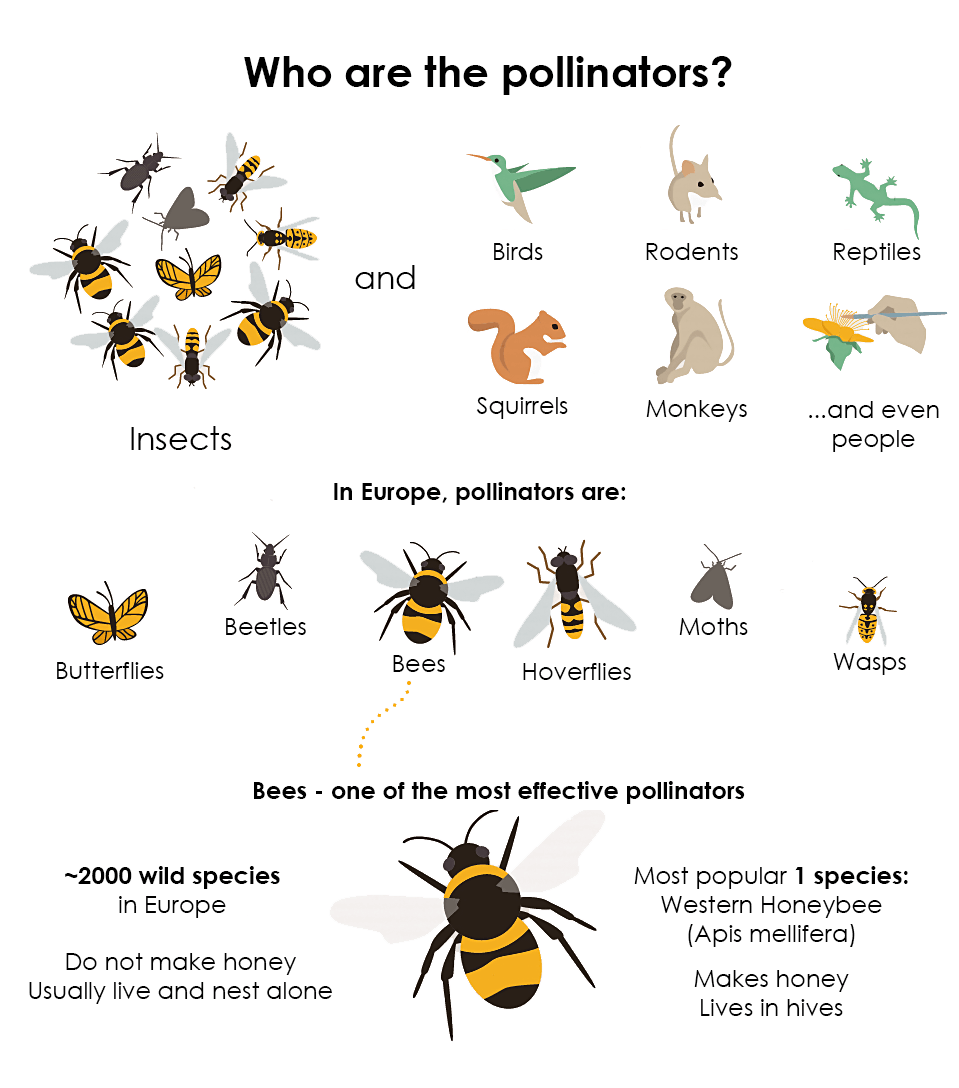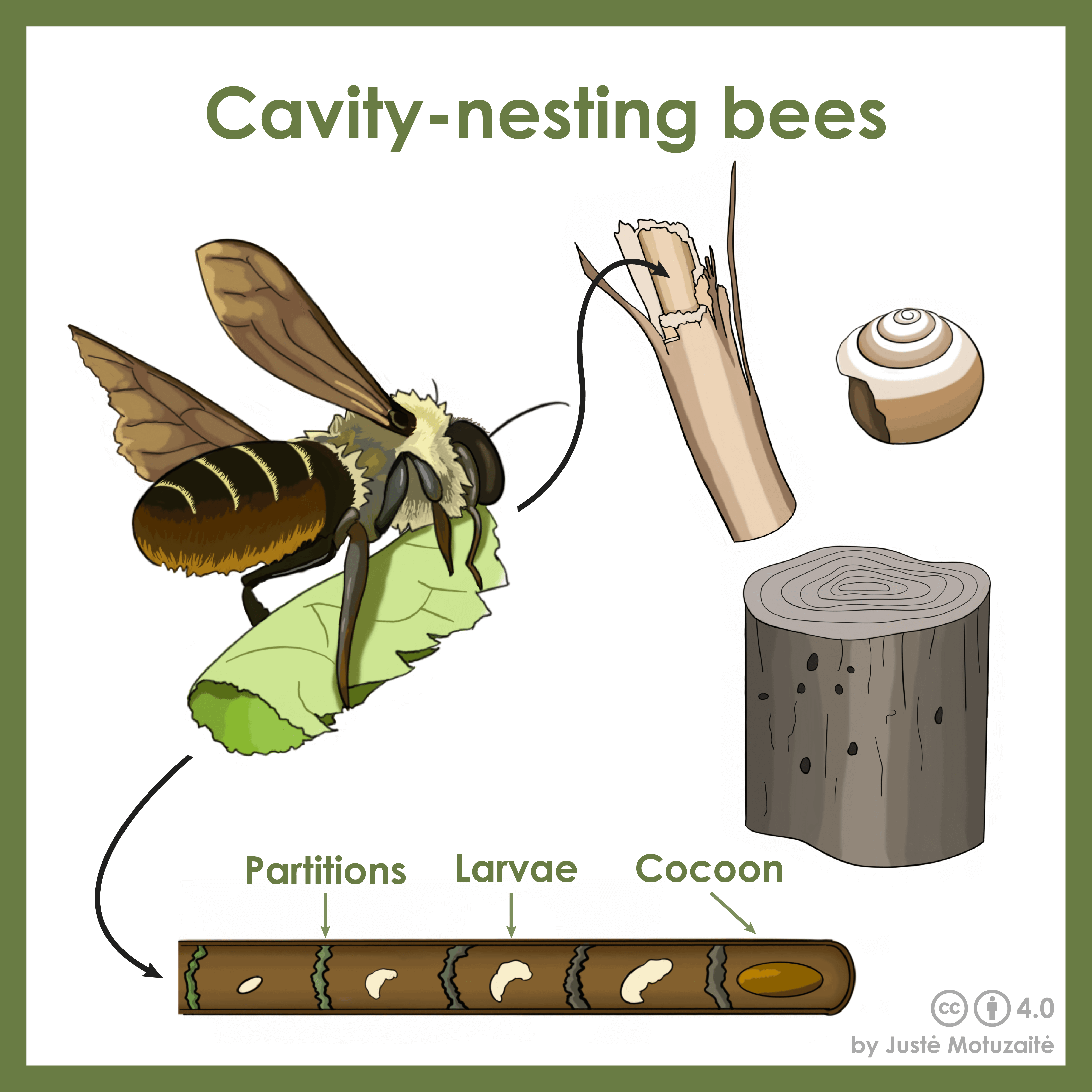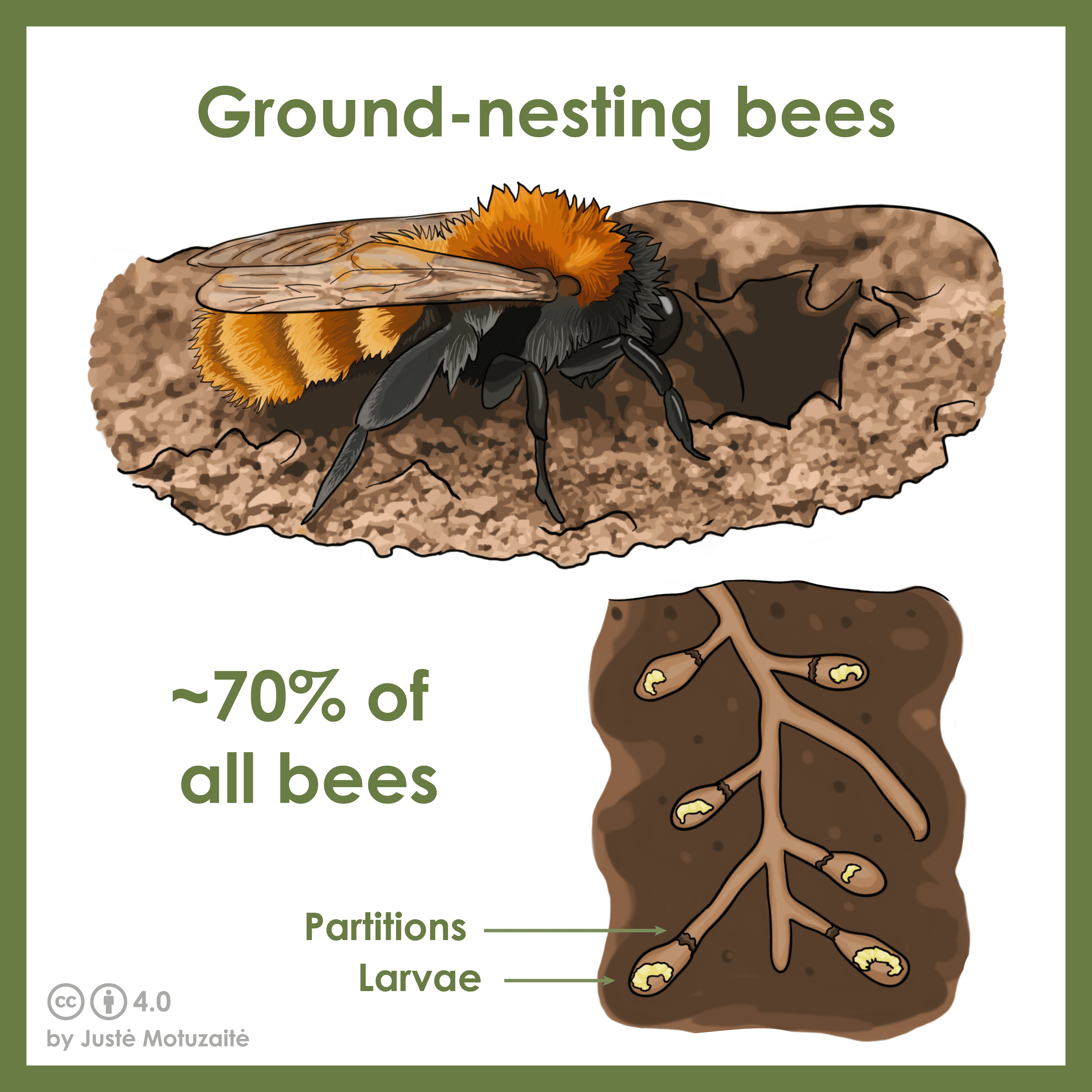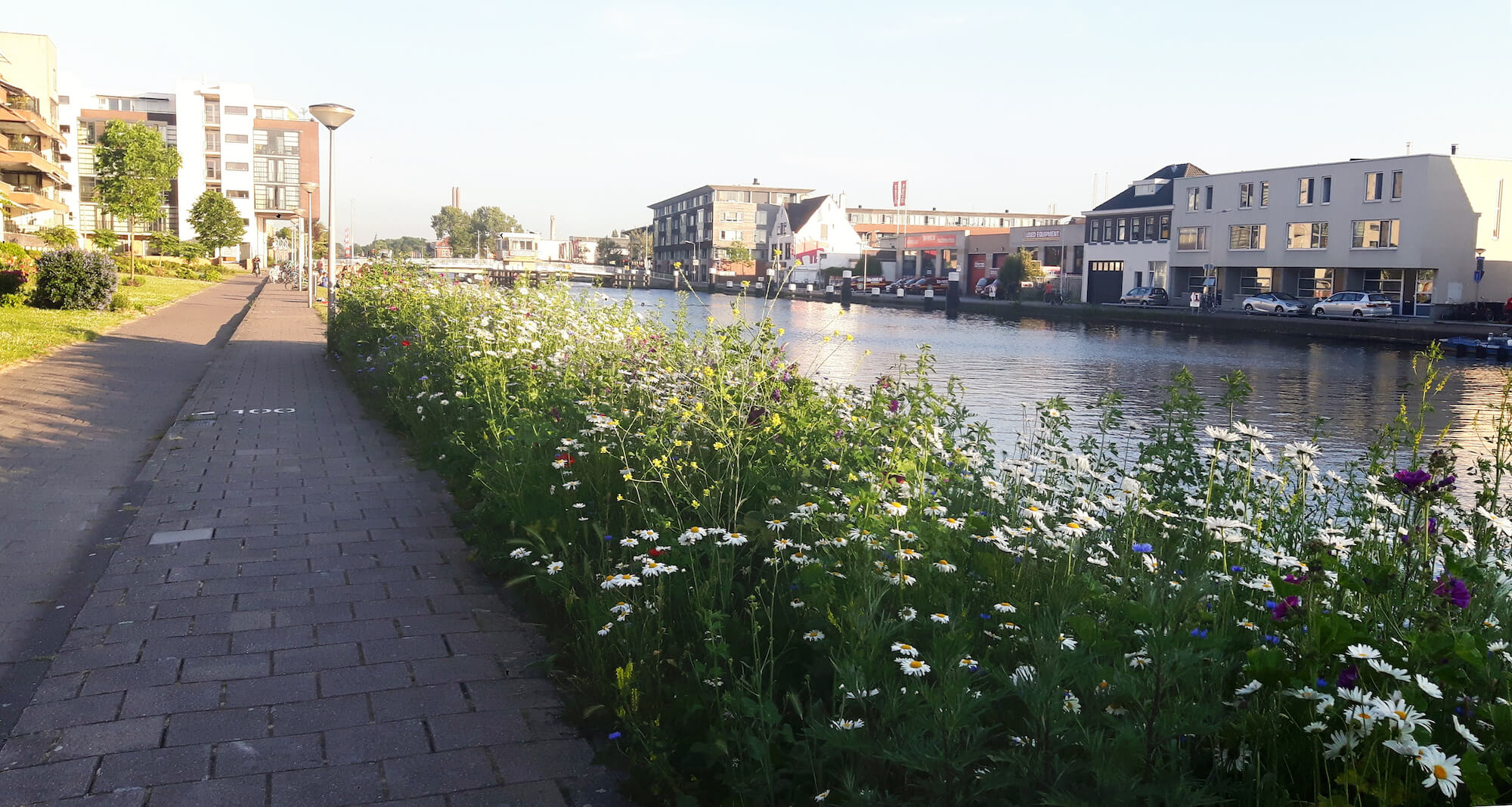
BiodiverCities

How can urban areas become a refuge for biodiverse ecosystems in rapidly expanding cities? ... How can humans and the wilderness thrive together in our modern cities? ...
Who are the pollinators?
Why are they Important?
Plants are pollinated by many species, including birds, rodents, squirrels, and even humans. However, insects, and especially bees, are one of the most efficient species that can do this job.
When the plant pollination is mentioned, most people think of a honey bee that collects nectar, produce honey and carries pollen from one flower to another. However, the honey bee is only one of the 2000 species living in Europe. Even if they may share a similar look, wild bees are different from domesticated species, especially in living and nesting behaviour: almost all wild bees live and nest alone, they do not produce honey. Most of the wild species build their nests underground (or just above it), while others find above-ground cavities in plant stems or wall cracks, where they lay their eggs and separate them by partitions made from the soil or leaves.
About 78% of all flowering plants and 85% of cultivated plants rely on various insect species to reproduce.
 Pollinators species. (Reference:
Pollinators species. (Reference:European commission )


The problem
The decline of diversity and abundance of insect pollinators is an increasingly severe problem worldwide. Rapidly modernizing cities often leave no room for the local ecosystems – infrastructures that is built is only beneficial to people, but not to other animal or plant species. Due to an ever-high level of urbanization and large-scale homogenization of the landscape for agricultural purposes, a large number of wild insects already struggle to find food and nesting areas because their habitats are rapidly disappearing.
Regardless of the approach to environmental and ecological issues, humans are directly dependent on the wild ecosystem and its diversity: thousands of plant species and microorganisms filter the water we drink and the air we breathe, wild insects pollinate the plants that become the fruits and vegetables on our tables.

How could we help solve it?
Cities can become safe havens for wild insects and play an important role in preserving existing ecosystems. The aim of this project is to encourage urban citizens to create wildlife areas in the city and to educate about the importance of wild insects in maintaining biodiversity in cities.
 Wildflower strips along canals. Delft, The Netherlands
Wildflower strips along canals. Delft, The Netherlands
Our activities
A DIY toolkit was created for the citizens: a set of tools are designed for the wild bees nesting in cavities and underground. Get to know more about the toolkit in the "Tools" section.
2 workshops were organized, during which the participants delved into the topic of biodiversity in the cities, its importance, and problems, learned about how to improve areas for wildlife in the urban areas. Read more about these two workshops in the "Events" section.

Reference list
European Parlament. (2019, December 3). What’s behind the decline in bees and other pollinators? (infographic). https://www.europarl.europa.eu/news/en/headlines/society/20191129STO67758/what-s-behin d-the-decline-in-bees-and-other-pollinators-infographic
Hall, D. M., Camilo, G. R., Tonietto, R. K., Ollerton, J., Ahrné, K., Arduser, M., Ascher, J. S., Baldock, K. C. R., Fowler, R., Frankie, G., Goulson, D., Gunnarsson, B., Hanley, M. E., Jackson, J. I., Langellotto, G., Lowenstein, D., Minor, E. S., Philpott, S. M., Potts, S. G., . . . Threlfall, C. G. (2017). The city as a refuge for insect pollinators. Conservation Biology, 31(1), 24–29. https://doi.org/10.1111/cobi.12840
Ollerton, J., Winfree, R., & Tarrant, S. (2011). How many flowering plants are pollinated by animals? Oikos, 120(3), 321–326. https://doi.org/10.1111/j.1600-0706.2010.18644.x
Zattara, E. E., & Aizen, M. A. (2021). Worldwide occurrence records suggest a global decline in bee species richness. One Earth, 4(1), 114–123. https://doi.org/10.1016/j.oneear.2020.12.005









